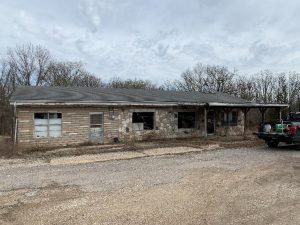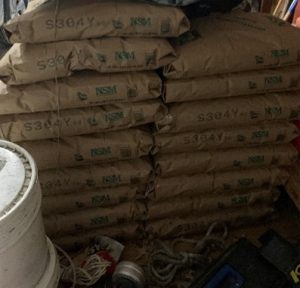By: Joe Traynor
Ask an almond grower what was the most useful class he took in school (including college) and if he (she) thinks about it long enough, the answer should be math, maybe algebra in high school, maybe arithmetic in the 3rd grade. Growers are faced with math problems daily – calibrating spray rigs, figuring the amount of chemicals to apply per acre, filling out use reports, making out budgets and calculating ROI (if you’re fortunate enough to have an ROI).
Virtually every problem facing mankind can be reduced to a math problem, whether landing a vehicle on Mars, projecting the consequences, if global warming is a valid thesis, feeding a growing world population, reducing pollution, returning a Republican to the White House, etc. Little wonder that our greatest scientists – Newton, Galileo, Einstein, Feynman and many others – were (are) primarily first-rate mathematicians.
Rapidly expanding almond acreage coupled with a static, or diminishing supply of bees is causing the almond industry to confront a major math problem: can growers get by with fewer colonies per acre? Here’s the original 1947 UC recommendation: “In general, one hive per acre is ample, even in adverse seasons” (Extension Circular 103, Almond Culture in California). Today, the generally accepted figure is two hives (colonies) per acre, with colony strength rarely defined. Some growers use 2.5 to three colonies per acre as a hedge against poor bloom weather, while others have cut back to 1.5 or one colony per acre but make sure they are getting strong colonies – defined as colonies with eight to 10 frames of bees. Growers that have cut back on colonies have not seen reduced yields, even in 2011, when bloom weather was far from ideal.
Some of the basic math data needed to determine the optimum economical number of colonies needed per acre is given below. Because one can easily get bogged down in this quicksand of data a shortcut (rope) is delivered afterwards. If the heavy dose of figures below is too intimidating, you can cut to the chase further down.
A 3000 lb almond crop has 1 million nuts (assume 350 nuts/lb). Assuming a 50% set of flowers, it would take 2 million flowers to give a 3000 lb crop (recent work by Frank Eischen, USDA, has shown that percent set can vary from 25 to 75%, requiring four million and 1.3 million flowers respectively to attain 1 million nuts).
Almond flowers produce 0.7 to 1.2 mg of pure pollen (up to 2.4 mg of bee-collected pollen; bees add “glue” to pollen). Assuming two million flowers/acre, an almond orchard will put out from five to 10 lbs of pollen per acre. (American Bee Journal, April 2001, pp.287-288)
A frame of bees contains about 1500 bees. An eight-frame colony contains about 12,000 bees; a third of these bees (4,000 bees) will be foraging bees.
Pollen-collecting honey bees usually work four hours/day in almonds (10AM to 2PM). Bees will visit 10 flowers/minute (20 or more, if pickings are slim; less than 10 if they can get a pollen load from a few flowers)
Assuming 4000 worker bees/acre and 100 trees per acre you should see 20 bees per tree during bloom if using one strong colony/acre (about half of those 4,000 workers will be flying or will be depositing their pollen loads in the hive).
20 bees per tree visiting 10 flowers a minute will visit a total of 200 flowers in a minute, or 48,000 flowers in 240 minutes (4 hours).
At 100 trees per acre, there are 20,000 flowers per tree. 20 bees per tree will visit each flower two or more times in one four-hour day (four or more times in two four-hour days). Although it takes only one pollen grain to set a nut, excess pollen deposited on the stigma of the flower stimulates the growth of that one pollen grain.
Individual almond flowers remain receptive for two to four days but are most receptive the first two days after they open (UC).
The effective blooming period (when all flowers are receptive) can be from three to 10 days. The more the bloom is strung out, the more time bees have to complete the pollination job.
Frank Eischen (USDA) has shown that one strong colony, equipped with a pollen trap, can collect six lbs of pollen in a day (12 lbs over a two-day period at peak bloom; significantly less than six lbs/day on the days before and after peak bloom). This colony had to stray out of its one acre allotted area to get six lbs. in a day; pollen traps cause colonies to collect more pollen than they normally would and they do so at the expense of colonies without traps.
An eight-frame colony will collect significantly more pollen than two four-frame colonies. (American Bee Journal, Feb. 1977, p.78; California Agriculture, UC, August, 1970).
Bee flight hours and statewide almond yields, 2011 and 2012
2011: 47 hours, 2650 lbs/ac. 2012: 65 hours, 2550 lbs/ac. (est.) Bee flight hours, courtesy of Tom Dunklee, Global Climate Center are for Merced but hour differences for other almond areas are similar (Sacramento Valley stations averaged only 22 bee hours in 2011).
Now, forget all the above data and calculations – here’s the shortcut, the rope: Using strong colonies, honey bees collect the daily ration of pollen provided by almond flowers by 2 PM (or sooner). Walk your orchard after 2 PM and rub the anthers of the flowers between your thumb and forefinger; if the bees have done their job, you should see little or no pollen on your fingers – the bees have finished their work for the day and are too smart to expend valuable energy for a minuscule reward (to verify this, check the entrances of your hives for returning pollen-collecting bees). If there is still pollen on your flowers after 2 PM you need stronger bee colonies or more colonies. Can you get by with fewer than two colonies/acre? Using the 2 PM orchard walk outlined above, it is certainly possible, but make sure you rent eight to 10-frame colonies. The 1947 UC recommendation of 1 hive/acre (with no strength specification) could well hold true today, but only if the hives contain strong bee populations.
Almond pollination is a community effort so make sure your neighbor rents colonies of sufficient strength to prevent your bees from seeking bigger rewards elsewhere. Because one eight-frame colony will collect significantly more pollen than two four-frame colonies, paying a premium price for the stronger colonies is a worthwhile investment. And remember that a hive is the structure (usually wooden) that contains the colony of bees. Hives can contain 0 to 20,000 or more bees. In any given year, there will always be plenty of hives available for California almond orchards, but not all orchards will be supplied with strong bee colonies.
The argument, and it’s a good one, against cutting back on bee colonies goes like this: I know I can get by with fewer bees most years, but for that one year when the bees only get an hour or two to do the job, I want as many bees out there as possible – it’s good insurance. 2011 was a year when intermittent rains confined bees to their hives for extended periods. Bee flight hours for 2011 were the lowest in the 10-year period these hours have been recorded – 22 hours in the Sacramento Valley – yet the 2011 almond crop hit an all-time record of 2650 lbs/acre. Even in a poor-weather year, there should always be enough bee-flight hours between storms to allow strong bee colonies to do their job. If there is only one hour of decent bee weather over the entire pollination period, sure, you would benefit from more bees. Such an event is highly unlikely, but in our current era of unlikely weather events, it’s certainly possible. If forecasts indicate a prolonged monsoon event with maybe only an hour or two of good weather over the entire blooming period, then ordering more colonies would be prudent. Although there probably wouldn’t be any extra bees in California, beekeepers in Texas and Florida often have bees available after almond bloom starts but would need a few days notice to get them here. Even if extra bees did give you good pollination in a one-hour year, there’s a good chance that bloom-time diseases would take your crop.
Note: The data figures given above are, in many cases, best guesses; actual figures can vary 100% or more from those given. Hopefully these figures will be refined in coming years and a skilled mathematician will calculate a more exact figure for the optimum number of colonies/acre that almond growers should use.
When the Pollen is Gone
Once bees have stripped the almond pollen from your orchard, the pollination game is over – no pollen, no pollination. A strange phenomenon, perhaps unique to almonds, occurs when the pollen is gone – bee activity often increases! You will often see more bees/tree after your trees have been pollinated. Look closely, though, and you will observe that these busy workers are all nectar-collecting bees, pushing their tongues to the base of the flowers to suck out the sweet nectar. Almond flowers release most of their nectar after the flowers are pollinated. We learned in grammar school that flowers produce nectar to attract bees to transfer pollen, so what’s going on here? At this time, we don’t know. Although there is no proof, some have speculated that the sugar-laden almond nectar nourishes the small developing nutlet, helping it to survive post-bloom nutlet drop. Some growers release their bees after all the pollen is gone, but most won’t release bees until they see no more flowers. If you decide you want all or most of your bees removed from your orchard when there are still many nectar-collecting bees working (but no pollen-collecting bees) you may find beekeepers reluctant to move them out, as almond nectar is a valuable food source for bees. Unless bees have another flower source to go to (as would Florida or Texas bees) they are better off remaining in the orchard until the last drop of almond nectar has been extracted.
Beekeeper Math
Beekeepers that attempt to satisfy almond growers demand for strong bee colonies are faced with a difficult choice: spend the necessary money to produce such colonies, or rent weaker colonies at a reduced price. According to UC Extension Apiculturist, Eric Mussen, “four frames of bees is the size a Central Valley California colony is likely to be (if it survives) when it is not fed extra syrup and protein during the year.” (Jan/Feb 2010 Newsletter, From the UC Apiaries). Dr. Mussen estimates that beekeepers must spend $120/colony to provide four-frame colonies and $200 to $220/colony to provide 8 to 10 frame colonies (these cost figures are likely 10% higher for 2013 than they were in 2010). A beekeeper is better off, probably far better off, renting a four to six-frame colony for $150 than renting an eight to 10-frame colony for $200. Even with record almond pollination fees, building high bee populations that continue to consume expensive feed during the Winter (both before and after almond bloom) does not make economic sense for many bee operations. With Varroa mites, viruses and diminished bee pasture taking an ever-mounting toll on honey bees, today’s beekeeper feels fortunate if he can cover operating expenses, let alone attain an ROI (a term foreign to many beekeeping operations).






